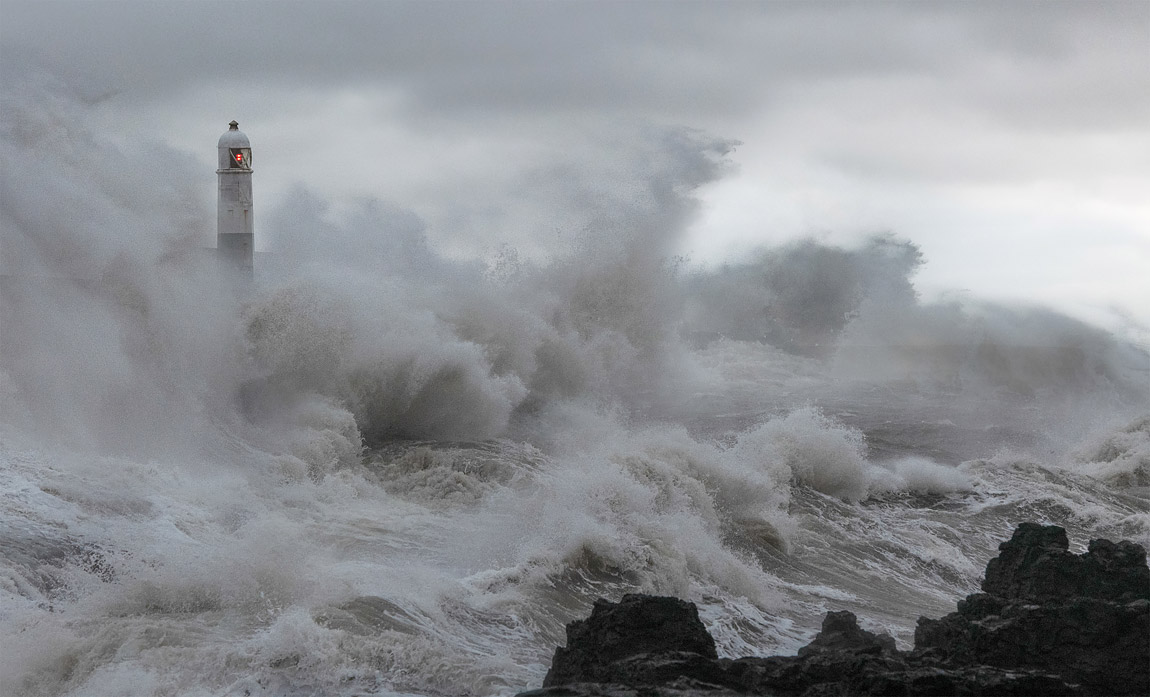On February 9, 2020, Storm Ciara battered Britain with wind speeds exceeding 97 mph, causing widespread flooding and disruption. The South Wales coastline was among the hardest-hit areas, and Porthcawl’s lighthouse became a focal point for photographers attempting to document the extreme conditions.
I arrived at Porthcawl early in the morning, fully aware of the risks. The Met Office had issued severe weather warnings, and the tide was at its peak. Waves, some exceeding 40 feet, were relentlessly pounding the coastline. The lighthouse, built to withstand the harshest maritime conditions, appeared dwarfed by the sheer size of the incoming swells.
Positioning myself behind a rocky outcrop near the promenade, I braced against the wind. The force was enough to make standing difficult, and each blast carried salt spray that coated my camera lens within seconds. Shooting in these conditions required rapid adjustments to exposure settings, with visibility fluctuating as waves crashed over the breakwater.
At one point, a massive wave engulfed the lighthouse entirely, the force of impact sending a reverberation through the air. I managed to capture the moment just as the water began to cascade back down. The scene was both awe-inspiring and a stark reminder of nature’s raw power.
As conditions worsened, emergency services began moving people away from the seafront. Satisfied with the shots I had taken, I packed up and retreated inland, leaving behind one of the most extreme storm surges Porthcawl had ever seen.


